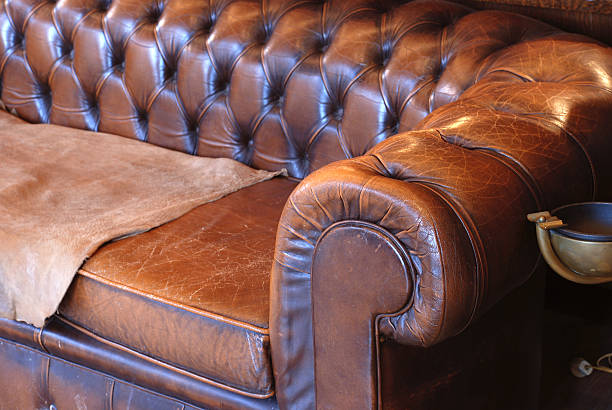6 Points for Cleaning a Leather Couches
Many modern sofas are made from different types of leather: aniline, semi-aniline, and pigmented leather. Leather is not a synthetic material. Rather, it is a natural material. In principle, leather is durable. In practice, however, it is very fragile and can easily be damaged or worn out. All leather couches have one thing in common: leather needs to be maintained regularly.
Like human skin, it needs regular and proper care to
maintain its natural and healthy properties. Without maintenance, a leather
sofa will quickly lose its charm, whether it's from stains, dryness, or color
intensity.
Remember that direct UV rays penetrate not only the leather
fabric but also its structure. Leather does not burn in the sun, but depending
on the leather type, the skin tissue may become damaged. Direct sun exposure
can also be expected to darken the leather. In addition to direct UV exposure,
placing a leather couch near a heat source can also damage the leather
material. Every piece of leather stores moisture and has a natural moisture
content, so to speak. This natural moisture content can be altered by direct
and prolonged exposure to heat. This results in dehydration of the leather
structure.
Leather sofas should be stored in a dry, well-ventilated
area (extremely dry or damp leather accelerates the aging process). If you
avoid direct sunlight and place the sofa in an air-conditioned room, the
leather may harden, become dull or crack. Below are detailed tips on cleaning
your leather sofa. Try also: Best
Couch
Cleaning in Double Bay
·
When purchasing a new leather couch, wipe the
surface with a soft, slightly dampened towel or cloth to gently remove dust and
dirt. Be sure not to wash it with water. Immediately afterward, use a leather
lotion and protective spray, which form a protective film on the surface of the
leather and prevent dirt from entering the "pores of the leather",
thus avoiding the appearance of indelible stains. It is highly recommended to
test leather lotions and sprays on an inconspicuous area of the sofa before
using them.
·
Do not use soap or abrasive cleaning products to
remove stains from leather. Finally, the stain should be soaked in water. This
may damage the leather sofa more than the stain itself. Instead, wipe the stain
with a clean, damp cloth or sponge and let it dry naturally.
·
If a drink is spilled on the leather surface,
soak it up with a clean cloth or sponge and then wipe it off with a damp cloth.
·
Grease stains should be wiped off with a dry
cloth. It is advisable to wipe first and then dab to prevent the grease from
soaking in. Then apply a leather lotion to remove the remaining oil.
·
Leather absorbs dyes easily, so keep grease,
pens, and ink away from the sofa. Avoid using sharp objects, as leather, like leather,
scratches easily. If there are small scratches, you can lightly sand the
surface of the leather with your fingers. If you find holes, cracks, or
fissures, do not attempt to repair the leather yourself. Leather repairs should
be done by a specialized watchmaker.
·
For daily maintenance, you can wipe the leather
surface with a damp towel or vacuum cleaner.
Before you start cleaning your leather couch, make sure you
know what type of leather it is made of. For example, if you want to clean suede,
the method described above is not the same. Suede is not only beautiful, it is
also delicate. For dry stains, we recommend using an eraser. For other stains,
wipe the surface of the suede with a damp towel or a suede-specific brush. The
best way to maintain suede products is to apply a small amount of white vinegar
to the stain and rub it in with a cloth. Please note that many commercially
available oils, lotions, and leather cleaners are not suitable for suede.
More read:
How
to Find the Right Upholstery Cleaner?



Nice post. Fabric Sofa Cleaning Melbourne
ReplyDelete